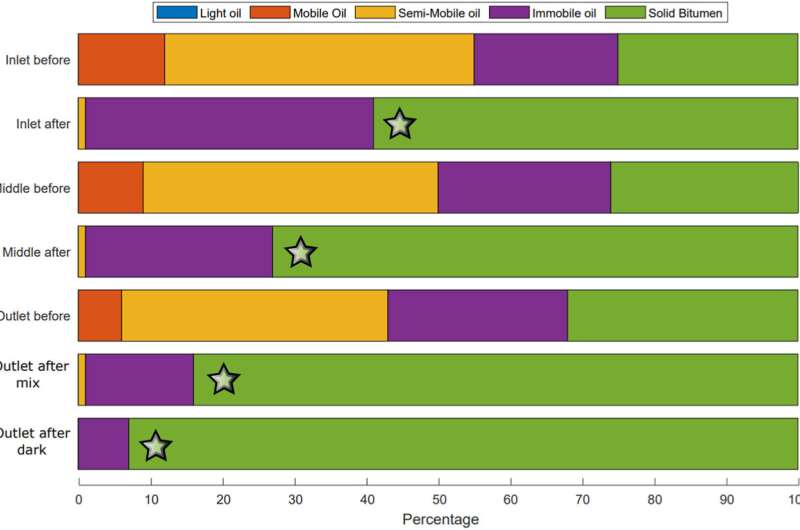Meet the Persian Gold Tarantula: a new species discovery just on time for Tarantula Appreciation Day 2023
IMAGE: NEWLY DESCRIBED TARANTULA SPECIES CHAETOPELMA PERSIANUM, COMMONLY REFERRED TO AS THE PERSIAN GOLD TARANTULA. view more
CREDIT: KARI KAUNISTO
The Persian Gold Tarantula (Chaetopelma persianum) is a newly described species recently discovered in northwestern Iran. In fact, the “woolly, golden hairs” the scientists observed and examined on a single specimen, were one of the features so unique that it was not necessary for additional individuals to be collected and physically studied. It was clear enough that it was a species previously unknown to the scientific community.
The paper, authored by Iranian arachnologist and taxonomist Dr Alireza Zamani (University of Turku, Finland) and his Canadian colleague Rick C. West, was published in the peer-reviewed, open-access scientific journal ZooKeys on the observance of the Tarantula Appreciation Day: 8th August.
The new species belongs to Chaetopelma, a relatively small genus, distributed in Crete, Sudan, and the Middle East. It is also one of the only two tarantula genera inhabiting the Mediterranean region.
The newly published discovery also presents the first record of this genus in Iran and the third known species of tarantulas in the country. Additionally, it extends the known range of Chaetopelma spiders by almost 350 km eastwards.
The name of the new to science species, Chaetopelma persianum, pays tribute to its country of occurrence, as Iran has historically been known as Persia. The authors suggest “Persian Gold Tarantula” as a colloquial name for the species.
This tarantula is an obligate burrower and inhabits high elevations in well-vegetated mountainous regions of the northern Zagros Mountains. The collected specimen used to describe the new species was found in a self-made ground burrow on sloped rocky ground, amidst sparse low vegetation and grasses.
It all started with local nature enthusiast Mehdi Gavahyan, who photographed a wandering male and sent the photo to Zamani. Having figured that the spider was likely a species currently unknown to science, the scientist asked Gavahyan to team up with Amir Hossein Aghaei, a nature enthusiast and a friend, and send him specimens of these spiders for further examination. However, Gavahyan and Aghaei managed to only collect and send a single female specimen that would later become the spider used in the species description.
Additionally, thanks to local citizen scientists and naturalists, the authors of the study later got hold of photos of another two males of the same genus, taken very close to the type locality of the new species: one in Sardasht in West Azerbaijan Province of Iran, and the other in the surroundings of Sulaymaniyah in Iraq. While it is highly probable that both these males belong to Ch. persianum, this cannot be confirmed until further examination of collected material from both sexes is conducted.
“Looking ahead, we believe that more comprehensive investigations employing integrative methods would greatly benefit our knowledge about the Chaetopelma spiders,”
say the researchers.
“Additionally, further collection efforts in lesser-sampled or completely unexplored regions, such as Saudi Arabia, Syria, Iraq, eastern Turkey and western Iran, could lead to the discovery of additional Chaetopelma species or records. These findings would be instrumental in gaining a more comprehensive understanding of the taxonomy and distribution of this genus.”
Research paper:
Tong S, Yang D, Qiu J-W, Ke C, Wang Z (2023) Podarkeopsis chinensis sp. nov. (Annelida, Hesionidae) from southeastern China. ZooKeys 1173: 339-355. https://doi.org/10.3897/zookeys.1173.106112
The newly described tarantula species (Chaetopelma persianum) seen in a defensive posture.
The newly described tarantula species (Chaetopelma persianum) seen in a defensive posture.
CREDIT
Kari Kaunisto
Burrow of Persian Gold Tarantulas in West Azerbaijan Province, Iran.
Burrow of Persian Gold Tarantulas in West Azerbaijan Province, Iran. The arrow in the photo on the right indicates the location of the burrow.
Burrow of Persian Gold Tarantulas in West Azerbaijan Province, Iran. The arrow in the photo on the right indicates the location of the burrow.
Habitat of the newly described Persian Gold Tarantula (Chaetopelma persianum) in West Azerbaijan Province, Iran.
CREDIT
Amir Hossein Aghaei
JOURNAL
ZooKeys
ARTICLE TITLE
A new species of Chaetopelma Ausserer, 1871 (Araneae, Theraphosidae) from Iran
ARTICLE PUBLICATION DATE
8-Aug-2023

